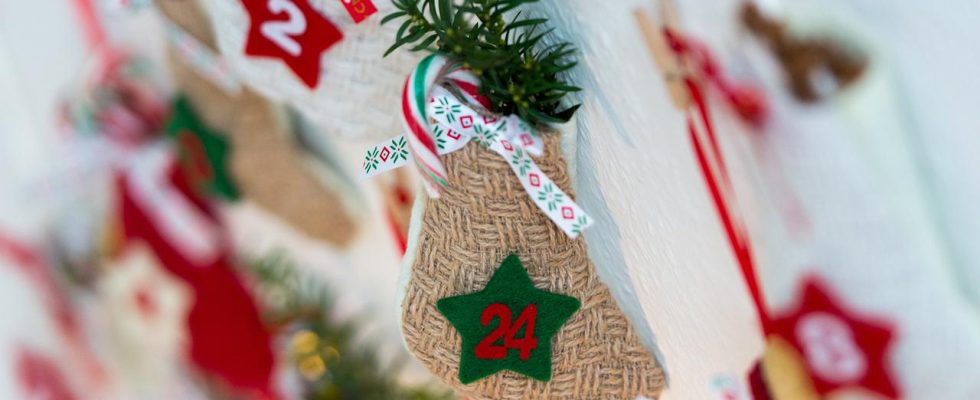Advent calendars sell millions of them, and Germans spend more than 100 million euros on them. At the same time, more and more people are filling their calendars themselves. This is also huge business for stores.
The selection is huge: Advent calendars are available for everyone and in every price range. There is the beauty calendar for 119 euros, toy calendar for 30 euros, spice calendar for 89 euros or calendar for pets for 50 euros. There are no upward price limits. But despite this huge selection, more and more consumers are filling the calendars for family and friends themselves. And that doesn’t even have anything to do with the high cost of the finished calendars.
Marion Pertlwieser from Niederdorfelden packs 24 packages each for her two daughters, aged six and nine, and her best friend. That means tying a bow 72 times. She has high standards: the gifts have to be “practical and valuable,” she says. Slippers, bath bombs and crayons go into the bags for the children. Champagne, Christmas socks and a handbag are added to your best friend’s calendar. All three together cost around 300 euros.
“Do it yourself” is the trend
Pertlwieser would get away significantly cheaper with ready-made Advent calendars, but she would like to put together the content herself and tailor it to the recipient. This means that “everyone involved can enjoy the small gifts for as long as possible.” She has been disappointed too often with the finished calendars; the contents of the toy calendars in particular “are disproportionate to the price,” she says.
And Marion Pertlwieser isn’t the only one who makes things herself: Every year, owner Yvonne Lülsdorf creates many templates for Advent calendars at the arts and crafts shop Kunst und Kreativ in Hanau, which her customers can be inspired by and recreate. On trend this year: an Advent wreath, made from 24 toilet paper rolls in which the small gifts find their place. The craft materials just for this cost less than ten euros, says Lülsdorf. But as soon as fabrics and small pendants are added, it becomes significantly more expensive.
Small gifts, big money
Craft materials for Advent calendars and small decorative items for the run-up to Christmas now account for around 20 percent of their annual sales. In addition, there are the fillings that you have to buy additionally: A customer who spent around 60 euros on the craft materials for her calendar says she spent another around 120 euros on the filling.
The Nowak toy store in Rödermark near Offenbach has also adapted to this trend. There are no finished calendars to be found here this year, but there are many small gift items such as pens, erasers, hand warmers, small fairy lights or magic lamps. Consumers can choose from around 700 items. And they make up around 15 percent of the Christmas business, says owner Jürgen Nowak.
Ten years ago, the finished Advent calendars were the best seller in his shop, but now there is hardly any demand for them. “The mood is changing and interest in individual calendar fillings is growing,” confirms his wife Bettina Nowak. Only for Advent calendar books, i.e. books with 24 chapters and Advent stories about the Christmas season, has the high demand so far been unbroken.
100 million euros for advent Calendar
Although more and more Germans are making their own Advent calendars, sales of finished Advent calendars continue to grow – also because Advent calendars, especially in the beauty sector, are rarely available for less than 100 euros. Around ten years ago, the Germans invested 72 million euros in the little joy in December; today it is more than 100 million euros.
Marion Pertlwieser doesn’t completely do without the calendars she bought either. The handmade ones are being given away, but she also treated herself to a calendar this year: a pre-packaged beauty calendar for 119 euros. Because one she filled herself “would be nonsense and no surprise.”

